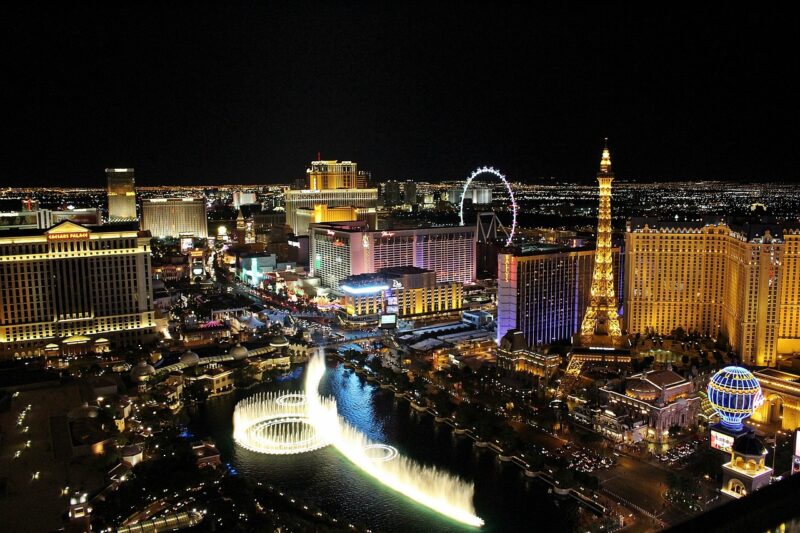The Mafia’s Role in Shaping Modern Las Vegas: Sin City’s Criminal Roots
November 15, 2024

Las Vegas, often referred to as “Sin City,” is a city of bright lights, extravagant casinos, and world-class entertainment. Yet, beneath its glitzy surface lies a complex history deeply intertwined with organized crime, most notably the influence of the Mafia. Understanding the role of the Mafia in shaping modern Las Vegas provides a compelling glimpse into not only the evolution of the city but also the darker elements that contribute to its fame.
1. The Origins of Las Vegas
Las Vegas was founded in 1905, initially serving as a railway stop. With a small population, the city remained relatively obscure until the 1930s. The construction of the Hoover Dam brought an influx of workers and visitors, setting the stage for future growth. However, it was the post-World War II era that signaled the beginning of Las Vegas’s transformation into a resort city.
The legalization of gambling in Nevada in 1931 was a pivotal moment, providing a legal framework that attracted many businesses, investors, and—most significantly—the Mafia.
2. The Rise of Organized Crime in Las Vegas
As the gambling industry began to thrive, the Mafia saw a golden opportunity. Organized crime families, particularly from Chicago, New York, and Los Angeles, sought to invest in casinos, seeking to profit from the lucrative gambling operations. One of the most notorious figures was Benjamin “Bugsy” Siegel, who championed the development of the Flamingo Hotel and Casino in 1946. His ambitious plans for the hotel marked a shift towards high-end gaming and luxury.
However, Siegel’s extravagant spending and failure to keep profits flowing drew the ire of his Mafia associates. His assassination in 1947 underscored the violent undercurrents of organized crime and the ruthless nature of those involved in building Las Vegas into a gambling mecca.
3. The Mafia’s Influence on Casino Development
The 1950s and 1960s saw the Mafia tighten its grip on Las Vegas. The involvement of mobsters extended beyond funding; they became key players in the management and operation of hotels and casinos. The **Sands**, **Stardust**, and **Tropicana** were among the properties heavily influenced by organized crime. The establishment of these iconic venues laid the groundwork for the resort-style Las Vegas we know today.
The Mafia’s influence was not just financial. They controlled labor unions, ensuring that their interests were protected within the casino workforce. This cutthroat competition and mafia control ultimately shaped the operational strategies of casinos, paving the way for the strategic marketing and themed entertainment that define modern Las Vegas.
4. The Transition from Mob to Corporate Control
As the 1970s approached, the tide began to turn against organized crime. The introduction of the **Nevada Gaming Control Board** and various federal investigations aimed at dismantling organized crime operations changed the landscape of Las Vegas. High-profile court cases, such as the **RICO Act**, aimed at crippling the Mafia’s influence, forced many mobsters to flee or go into hiding.
By the 1980s, corporate America recognized the potential of the Las Vegas Strip. Companies like **MGM Resorts** and **Wynn** took center stage, investing heavily and transforming the city into a wholesome family-friendly destination while marginalizing mob influence. This transition not only cleaned up the image of Las Vegas but also allowed for unprecedented growth.
5. The Enduring Mystique of the Mafia
Despite the decline of Mafia power in Las Vegas, the legacy and allure of organized crime continue to captivate the imagination of visitors and filmmakers alike. Movies like **Casino** (1995) highlight the tumultuous relationship between the Mafia and Las Vegas, keeping the story alive in popular culture.
Additionally, museums and tours dedicated to the city’s mob history have become popular attractions, allowing tourists to explore the darker narratives that contributed to Las Vegas’s transformation.
6. Conclusion: Reflections on Sin City’s Roots
The story of Las Vegas is incomplete without acknowledging the profound influence of the Mafia. From the early days of gambling legalization to the corporate takeover of the 1980s, the legacy of organized crime has shaped the very fabric of Sin City. Today, as Las Vegas thrives as a global entertainment capital, the echoes of its criminal roots serve as a reminder of the city’s complex history.
Understanding this history not only enriches the experience of visiting but also underscores the resilience and resourcefulness of a city that continues to evolve while holding onto its storied past.







